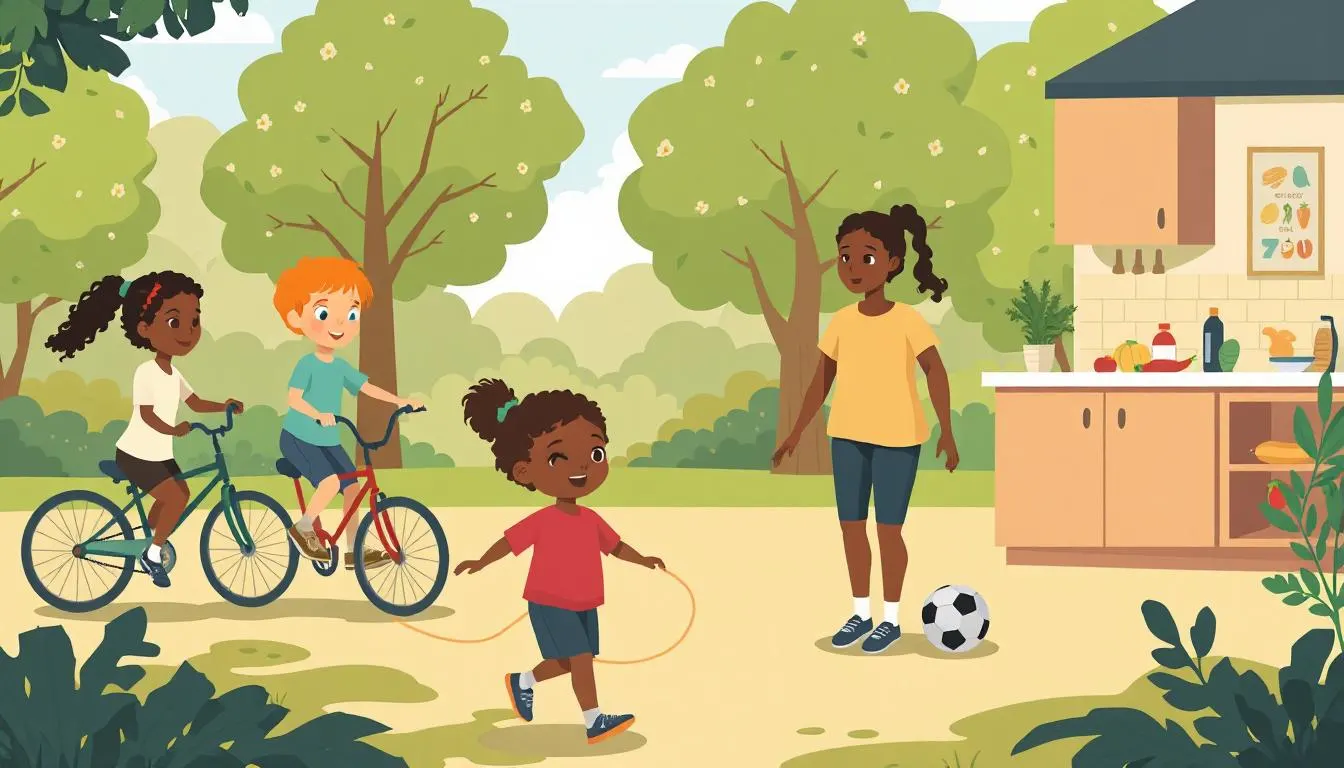Hey there, have you ever stopped to think about the rising rates of childhood obesity these days? It’s a topic that’s been getting a lot of attention recently, and for good reason. Childhood obesity is a serious health issue that can have long-term consequences on a child’s well-being.
From poor eating habits to lack of physical activity, there are many factors that contribute to childhood obesity. But the good news is that it’s never too late to start making positive changes to prevent it.
So grab a cup of tea, sit back, and let’s dive into the world of childhood obesity. Together, we’ll explore the importance of early prevention, healthy eating habits for kids, the role of parents and caregivers, and much more. Let’s work together to ensure our children grow up healthy and happy!
Factors Contributing to Childhood Obesity
Hey there! Let’s dive into the factors that contribute to childhood obesity. It’s important to be aware of these so we can take steps to prevent it. One major factor is a poor diet high in sugar, fats, and processed foods. Lack of physical activity also plays a big role – kids need to move and play to stay healthy. Genetics can also be a factor, but remember, it’s not the only one!
Other factors like environment (access to healthy foods, safe places to play) and socio-economic status can also impact a child’s weight. Keep in mind that every child is different, so it’s essential to address these factors in a personalized way. By understanding these contributors, we can work towards creating a healthier future for our kids!
Importance of Early Prevention
Hey there! Did you know that preventing childhood obesity early on is crucial for the health and well-being of our little ones? By instilling healthy habits from a young age, we can set them up for a lifetime of good health.
- Start by offering a variety of nutritious foods like fruits, vegetables, whole grains, and lean proteins. Encourage them to try new foods and involve them in meal planning and preparation.
- Limit sugary drinks and snacks high in fat and sugar. Instead, opt for water, milk, or healthy homemade snacks like fruits or nuts.
- Get your kids moving! Encourage at least 60 minutes of physical activity each day. Whether it’s playing at the park, riding bikes, or dancing around the living room, every bit counts.
Remember, as parents and caregivers, we play a vital role in shaping our children’s habits. Let’s work together to create a healthy environment where our kids can thrive!
Healthy Eating Habits for Children
Ensuring your child develops healthy eating habits from a young age is crucial for their overall well-being. Here are some tips to help your child maintain a nutritious diet:
- Encourage a variety of fruits and vegetables in their meals to provide essential vitamins and minerals.
- Limit sugary drinks and opt for water or milk instead to keep them hydrated and healthy.
- Choose whole grains over processed foods for a good source of fiber and energy.
- Involve your child in meal planning and preparation to instill a love for cooking and healthy eating.
- Set a good example by eating balanced meals together as a family and avoiding unhealthy snacks.
By incorporating these habits into your child’s daily routine, you can help them form a strong foundation for a lifetime of health and wellness.
Regular Physical Activity for Kids
Hey there! It’s time to get those little ones moving and grooving. Regular physical activity is crucial for children’s health and well-being. Not only does it help them stay fit and maintain a healthy weight, but it also strengthens their muscles and bones, improves their coordination and balance, and boosts their mood and mental health.
Encourage your kids to engage in at least 60 minutes of physical activity every day. This can include anything from playing tag in the backyard, going for a bike ride, swimming, dancing, or even just taking a brisk walk around the neighborhood. The key is to find activities that they enjoy and make it fun!
Remember, as a parent or caregiver, you lead by example. So, why not join in the fun and get active together as a family? It’s a great way to bond, stay healthy, and create lasting memories. Let’s get moving!
Role of Parents and Caregivers in Prevention
Hey there, parents and caregivers! Did you know that you play a crucial role in preventing childhood obesity? Your influence and guidance can make a huge difference in your child’s health and well-being.
- Lead by example – show your kids the importance of healthy eating habits and regular exercise by practicing them yourself.
- Encourage your children to try new fruits and vegetables, and involve them in meal planning and preparation to make healthy eating fun.
- Limit sugary drinks and unhealthy snacks in the house, and opt for nutritious alternatives instead.
- Make physical activity a family affair – go for walks, play sports, or dance together to keep everyone moving and active.
By being a positive role model and creating a healthy environment at home, you can help your children develop lifelong habits that will keep them happy and healthy. You’ve got this!
Community and School Involvement in Addressing Childhood Obesity
Hey there! Did you know that schools and communities play a vital role in fighting childhood obesity? By joining forces, we can create a supportive environment that encourages healthy habits in our kids.
- Community Programs: Local organizations can offer programs promoting physical activity and healthy eating. Encourage your child to participate in these fun activities!
- School Initiatives: Schools can provide nutritious meals, physical education classes, and recess time. Get involved by supporting these initiatives and advocating for healthy school policies.
- Parent-Teacher Collaboration: Stay connected with your child’s school and communicate with teachers about your concerns. Together, we can work towards a healthier future for our children!
Remember, it takes a village to raise a healthy child. Let’s come together and make a positive impact on our kids’ well-being!


